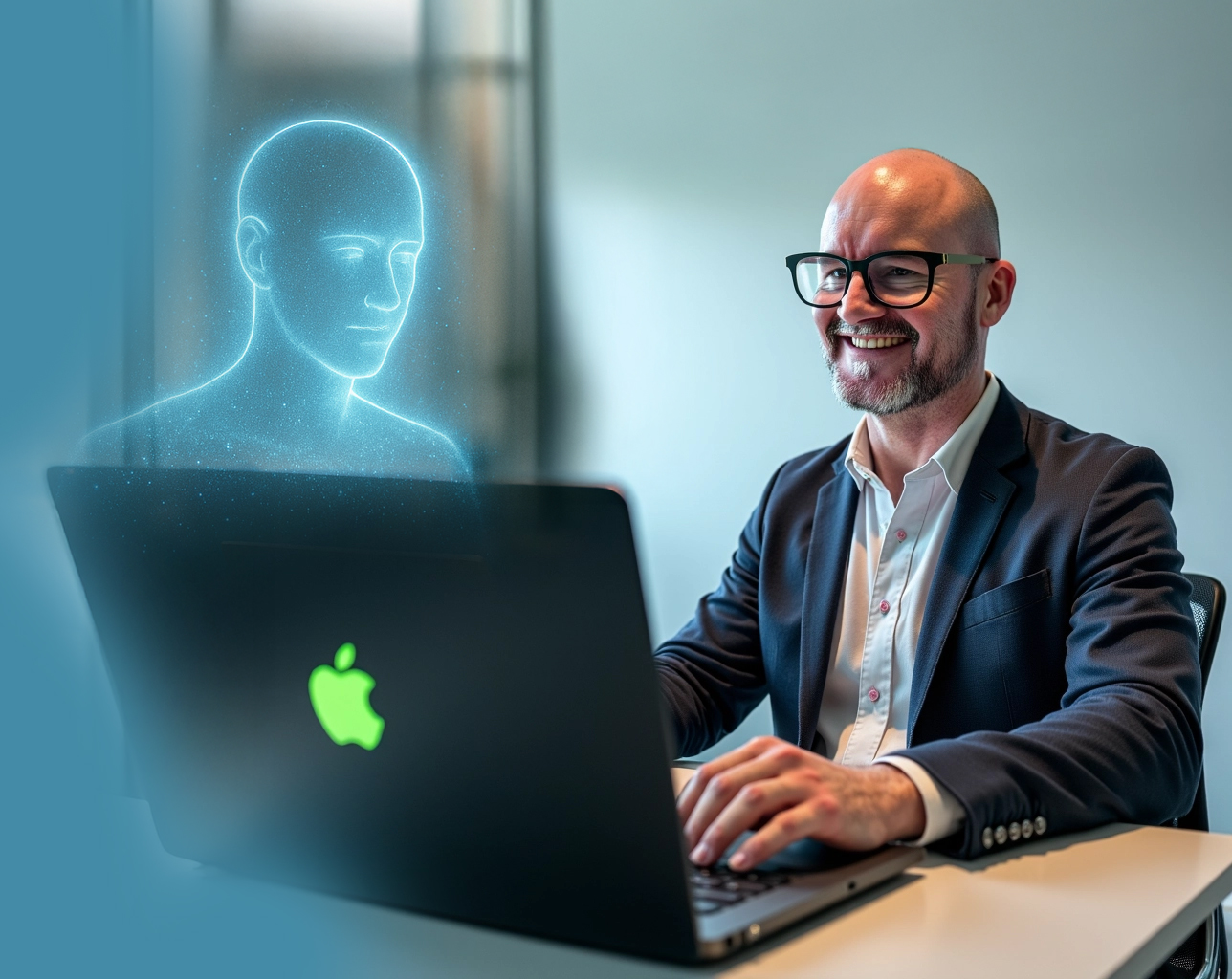OpenAI and Jony Ive: Designing the Future of AI Hardware
OpenAI teams up with legendary designer Jony Ive to create a new era of AI hardware—screen-free, intuitive, and seamlessly integrated into daily life.

Why OpenAI’s Move Into Hardware is so Exciting
The Strategic Leap: Bridging AI and Human Experience
OpenAI’s decision to acquire Jony Ive’s startup io for $6.5 billion marks a major change in how people and artificial intelligence interact. This move shows that OpenAI wants to do more than just improve AI software—the company now focuses on changing the way you use AI in your everyday life.
By creating dedicated devices that combine advanced AI with top-quality product design, OpenAI plans to deliver tools that become as natural and essential as your smartphone. However, these devices will work differently because generative AI shapes every part of how you use them.
Traditionally, devices have limited how you access and benefit from the latest AI models. OpenAI’s new hardware plans aim to remove these limits:
- Expect smooth conversations and better context recognition.
- AI will help you before you even ask.
- AI shifts from a screen-based tool to an always-available partner.
- Supports creativity, productivity, and decision-making.
Experts point out these devices could set new standards for automating workflows, managing personal information, and adapting to your needs—especially useful for technology, design, and AI-driven fields. (Forbes, StatusNeo)
Why Design Matters: Trust, Adoption, and Emotional Connection
Working with Jony Ive, known for his work at Apple, brings a strong focus on design to OpenAI’s hardware. Devices that look and feel good are more likely to be trusted and used frequently.
Research in human-computer interaction shows:
- Device aesthetics and feel influence trust, perceived reliability, and willingness to explore new features.
- Merging powerful AI with best design practices helps create devices that people depend on and enjoy daily.
Setting the Stage for a New Era of Human-AI Collaboration
OpenAI is not just improving algorithms behind the scenes—it’s placing generative AI directly into your hands and homes. This:
- Changes how you work, create, and connect.
- Marks the beginning of intelligent products that truly understand your needs, routines, and ambitions.
- Opens up new opportunities previously inaccessible.
OpenAI’s leap into hardware is about more than just form—it’s about trust, workflow transformation, and making generative AI a tangible, integrated part of daily life. This is the next benchmark for innovation and accountability in the AI industry.

The Deal Explained: OpenAI, Jony Ive, and io
The $6.5 Billion Acquisition: Structure and Entities Involved
- OpenAI officially acquired io, Jony Ive’s AI hardware startup, in a deal worth about $6.5 billion (all in OpenAI equity).
- About 55 employees from io will now work at OpenAI, accelerating advanced AI hardware development.
- LoveFrom, Jony Ive’s renowned design company, will work closely with OpenAI on hardware plans.
Jony Ive, famous for Apple’s iPhone, iPad, and MacBook designs, started io to create a new kind of device for advanced generative AI. io’s focus is on blending top product design with seamless AI integration.
This acquisition:
- Shows OpenAI’s intent to lead both in AI software and physical devices.
- Brings io’s design/engineering teams into OpenAI for rapid creation, testing, and release of new AI devices.
- With Jony Ive’s involvement, OpenAI sets new standards for trust, ease of use, and user experience.
Immediate and Long-Term Integration
- Jony Ive and LoveFrom will take on broad design tasks for all OpenAI and io hardware projects.
- Teams can move rapidly from concept to finished product—handling planning, workflow checks, safety standards, and launches.
Expert Commentary: Strategic Impact
This partnership unites strong engineering, thoughtful design, and careful testing. OpenAI’s purchase of io is about more than hardware—it’s about creating AI products that are reliable, enjoyable, and creative.
Sources:
The Rationale: Fusing World-Class AI With Design Excellence and Creative Excitement
Why Design Matters in AI Hardware
Great AI needs more than powerful processors—it needs natural, easy-to-use design Research in human-computer interaction (Norman, 2013; Hassenzahl, 2010) shows:
- A device’s look and functionality affect trust, usage frequency, and workplace fit.
- Generative AI’s benefit depends on hardware feeling simple and anticipating user needs.
The OpenAI–Jony Ive partnership applies these insights to build AI hardware that is not just powerful but also smooth and inspiring to use. (The Verge)
Creative Excitement: Redefining What’s Possible
OpenAI’s goal is to create devices that go beyond screens and keyboards:
- New tools will encourage exploration, creativity, and experimentation.
- Sam Altman, OpenAI CEO: project seeks to “reimagine every touchpoint between humans and intelligent systems.” (OpenAI)
Integrating AI into well-designed hardware allows for:
- New ways to track, explain, and support how AI works.
- Devices designed with clarity help users understand AI decisions, supporting both regulatory rules and user confidence.
The partnership aims to shape both technology and culture—leading in products that excite, build trust, and change how people and AI work together.
What Will OpenAI and Jony Ive Build?
Early Clues and Industry Buzz
The Vision: Screen-Free, Contextually-Aware Generative AI Devices
- Reports show OpenAI and Jony Ive are working on a new type of generative AI device, notably without a traditional screen.
- According to leaks from The Verge, the team is designing a pocket-sized, screen-free device that uses advanced generative AI models to understand your environment and respond in real time.
Key features may include:
- No screen—focuses on blending into your daily routine.
- Uses natural language, voice control, gestures, and environmental signals.
- Always-on, low-power generative AI likely running versions of OpenAI’s GPT models.
- Includes microphones, environmental sensors, and on-device AI chips for privacy and reduced cloud data usage.
- Matches current trends in wearable AI and privacy-focused technology (Forbes, 2024; Fortune, 2024).
Industry Buzz: Reinventing Workflow and Everyday Utility
- Analysts believe this project could transform digital assistants, productivity tools, and creative apps.
- The device could serve as a personal helper for tasks, communication, and information—fitting smoothly into both work and creative activities.
- On-device AI could enable new ways of managing data and improving transparency in real-time workflows.
Dr. Eliza Tran, AI Systems Auditor at Goodwin, notes that:
- Generative AI devices blending Jony Ive’s design and OpenAI’s AI could change trust and usage patterns.
- Industry will need new rules for transparency, auditability, and user control.
The Takeaway: A New Class of Generative AI Devices
Details remain secret, but indicators suggest a new kind of generative AI device: screen-free, context-aware, and designed for seamless integration into life. The OpenAI–Jony Ive partnership brings software and hardware together at the edge of new possibilities.
Sources: The Verge (2024), OpenAI (2024), Forbes (2024), Fortune (2024)

The Impact: How AI Devices Will Transform Everyday Life
Seamless Integration Into Daily Routines
Human-AI devices aim to blend digital intelligence with everyday life:
- Interaction via voice, gestures, or ambient signals—no need for screens or keyboards.
- AI becomes a proactive helper, working alongside you instead of just waiting for commands.
Personalized Assistance and Contextual Awareness
- AI devices can learn routines, preferences, and needs while respecting privacy.
- On-device processing plus secure cloud connections enable proactive support—predicting calendar events, managing home energy, adjusting comfort settings automatically.
Redefining Communication and Collaboration
- AI devices use advanced language processing and handle information from text, speech, and images.
- Designers and managers can brainstorm with AI partners that understand context and offer real-time suggestions or evaluations.
- Tasks like record-keeping and compliance monitoring become automated with secure logs of Human-AI interactions.
Ethical, Accessible, and Trustworthy Experiences
- New AI devices prioritize user trust and accountability.
- Features include transparent interfaces, privacy controls, and explainable AI models.
- Users control their data and interactions.
- OpenAI and Jony Ive highlight not just technology but responsible design—making advanced AI accessible and dependable for all skill levels.
Everyday Impact: From Homes to Workplaces
- Human-AI devices will transform home tasks, simplify healthcare appointments, and enhance creative work.
- Benefits: boosted productivity, increased accessibility, support for well-being.
- Technology adapts to you, not the other way around.
- As these devices become common, technology becomes less visible, allowing focus on what matters most.
It’s Nearly Here: The New, Exciting Era of Human-AI Interaction
A Paradigm Shift in Exciting AI Product Design
The OpenAI–Jony Ive partnership brings a new approach to AI products:
- OpenAI’s advanced generative intelligence + Jony Ive’s celebrated design skills.
- Focus on devices that go beyond technical specs—aiming for natural, emotionally resonant, everyday experiences.
- Sets an industry example: value not just in device capability, but in how devices make users feel curious, safe, and delighted.
Scientific Foundations and Expert Insights
Research confirms that design, shape, and clear function shape user experience (Norman, 2013; Shneiderman et al., 2016):
- Devices that look and work well are more likely to be included in daily routines.
- Experts agree this approach will help generative AI become a regular part of life—combining technical features with human needs.
A New Standard for Trust, Creativity, and Auditable Workflows
- AI devices must be transparent and follow clear rules.
- Auditability: users can check how devices make decisions.
- Compliance: devices follow established guidelines.
- OpenAI plans to build these features in from the start—putting user needs first and keeping designs simple.
The Road Ahead: Inspiring Innovation and Everyday Impact
- Massive investment signals a strong future for innovative AI product design.
- Next-gen devices go beyond productivity—they could transform creativity and imagination.
- As generative AI becomes part of daily tools, expect increased inspiration and productivity.
- The human-AI partnership aims to be powerful and beautiful—bringing positive change to daily life.
References:
- Norman, D. A. (2013). The Design of Everyday Things. Basic Books.
- Shneiderman, B., Plaisant, C., Cohen, M., Jacobs, S., Elmqvist, N., & Diakopoulos, N. (2016). Designing the User Interface: Strategies for Effective Human-Computer Interaction. Pearson.
- OpenAI official blog
Frequently asked questions
- What is the significance of OpenAI's acquisition of Jony Ive's io?
OpenAI’s $6.5B acquisition of Jony Ive’s io marks a strategic move to merge advanced generative AI with world-class product design. This partnership aims to create intuitive, screen-free AI devices that blend seamlessly into daily life, redefining how humans interact with technology.
- What kind of AI hardware will OpenAI and Jony Ive build?
Industry reports suggest they are developing pocket-sized, screen-free generative AI devices. These products will use environmental sensors, voice, and gesture controls to offer proactive, context-aware assistance—making AI more natural and integrated than ever before.
- Why does design matter in the development of AI devices?
Research shows that intuitive, appealing design boosts user trust, adoption, and emotional connection. By combining OpenAI’s technology with Jony Ive’s design philosophy, the goal is to make AI products that are friendly, reliable, and enjoyable for everyday use.
- How will these AI devices impact daily life and work?
The new AI devices aim to automate workflows, personalize assistance, and enhance collaboration. With features like on-device processing, privacy controls, and transparent interfaces, they support productivity, creativity, and accessible technology for everyone.
- What are the ethical and compliance considerations for these AI devices?
OpenAI and Jony Ive are prioritizing transparency, auditability, and clear user control. Features include explainable AI, detailed privacy settings, and compliance with regulatory standards, ensuring that users remain in control of their data and interactions.
Discover Next-Gen AI Solutions
See how AI-driven devices and intuitive design can transform your workflow and everyday experience. Try FlowHunt's AI tools today.



